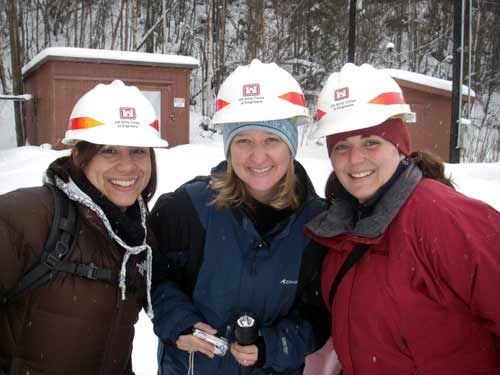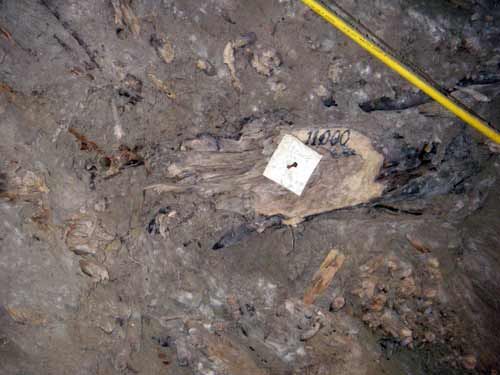Newspaper articles, TV interviews, public speaking engagements, oh my! I was so focused on meeting the other PolarTREC participants, learning about the programs expectations, and figuring out all the technology that I completely forgot that I have to start connect with the media and getting my incredible expedition some well deserved publicity. Also, I really want to share my adventure with all interested people during community, classroom, or organization appearances. My LMS students, I plan to rely on you to help me prepare for this aspect of the adventure. Who knows, perhaps you'll make it into the publicity as well!
I was very enthralled, and a little intimidated, by the morning presentations about outreach opportunities, so I was completely ready when the time came to head out for the afternoon's field trip to the United States Cold Region Research and Engineering Laboratory (CRREL) Permafrost Tunnel.
 Christina Galvan, Lindsay Knippenberg, and I
Christina Galvan, Lindsay Knippenberg, and I
 11,000 year old tree
11,000 year old tree
With snow falling all day, the drive up to the Tunnel was a little slow. Alaskans really know how to drive in snowy conditions! Our van didn't get stuck until we had made it to the Tunnel and were trying to drive an un-plowed road. No problem! The PolarTREC teachers just hopped out and left the van where it was. We were all too excited to get into the tunnel to worry about our ride. After an introduction to the history and purpose of the Permafrost Tunnel by Matthew Strum, donning hard hats, and a safety talk we split into two large groups and entered into the tunnel. The first thing that I observed was the smell of the tunnel. It had a musty, metallic odor, which my friend Gary Wesche described as the smell of a long unused chicken coop. It took a long while to be "ok" with the smell. The tunnel quickly took us down into the permafrost where the ice and the soils dated back thousands of years. There is evidence of plant and animal life embedded in the layers of the permafrost. Permafrost is defined as soils that remain frozen at or below 0 degrees C for at least 2 years. Much of the permafrost in Alaska has far exceeded the minimum years required to meet the definition!
After the tunnel tour and a quick snowfight we began to head back to Fairbanks. On the way into town we stopped by a section of the Trans-Alyeska Pipeline for another photo opportunity. Did you know that the tool used to clean the pipes that makeup the Pipeline is called a "Pig!" The "Pig" scrapes oil build-up off the sides of the pipes to keep everything flowing smoothly. Hows that for the little pig that could!
 Burly Miss Diers
Burly Miss Diers
